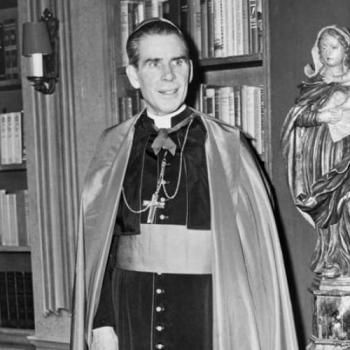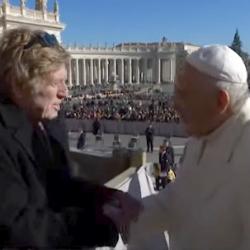This post appeared on Father Dwight Longenecker’s Facebook feed. It describes the experiences of a Protestant minister wearing a Roman collar—and finding himself mistaken for a Catholic priest.
Fr. Dwight explained:
That’s why, when I’m on the move I increasingly wear either mufti or my full cassock and collar.
Here’s the post, from the blog TiberJudy:
I have a friend who is a Presbyterian minister. He’s the pastor of a large congregation and he’s always busy. Recently he travelled out of town for a ministry conference. The summer weather caused a flight delay and he spent several hours waiting at the airport. He was about to doze off when a gate agent roused him and said there was an emergency in another part of the concourse and they needed him to help out with it right away. Naturally he followed the agent and several several gates down the corridor, he saw a middle-aged man laying on the floor. A woman keeling over him looked up tearfully when my friend appeared and she pleaded, “Oh Father. Please help him.”
It’s not unusual for some Protestant ministers to wear the Roman collar most often associated with Catholic priests. This is true for my friend, who has worn one for many years. It’s a personal choice for him and isn’t something his bishop requires. Over the years, there have been several occasions in which he’s been mistaken for a priest. But that day in the airport was different.
The sick man was a heart patient and he was having chest pains and difficulty breathing. As they waited on the paramedics to arrive, he and his wife had asked for a priest to come to him. When the gate agent had spotted my friend wearing a collar, she thought she’d found one. The sick man wanted a priest because he thought he might be dying. He wanted to receive the confession, anointing, and Holy Eucharist of the Church which many people call “the last rites.”
My friend told the man and his wife that he was a Presbyterian minister and not a priest. The three of them prayed together in the minute or so until the medical team arrived and he was rushed to the hospital. The incident left my friend shaken. He told me that it wasn’t unusual for people to assume he was a Catholic priest, but that this was the first time someone in danger of death had come to him. He discussed the incident with some of his fellow ministers when he finally made it to the conference. Most of them had also experienced similar “mistaken identity” situations.
He thought about what had happened at the airport for several weeks before making the decision to stop wearing the clerical collar. As we were talking about it, he summed the process up pretty nicely: “When I wear the collar, I’m advertising something I can’t deliver.” He can’t hear someone’s confession and offer them absolution. He can’t give them the Sacrament of the Anointing of the Sick. And he can’t share the Holy Eucharist with them. He can’t be the Catholic priest that people think him to be.
Read the rest.
I suspect this experience is not uncommon. And I imagine it probably leads to confusion in hospital and prison ministry, as well.
The irony, of course, is that what we commonly call “the Roman collar” really isn’t Roman. As our good friends at Wikipedia note (and I pointed out in my blog a few years back), its roots are actually Protestant:
According to the Church of England’s Enquiry Centre (citing the Glasgow Herald of December 6, 1894), the detachable clerical collar was invented by the Rev Donald Mcleod, a Church of Scotland (Presbyterian) minister in Glasgow.
Invented in the Presbyterian Church, the clerical collar was adopted by other Christian denominations, including Anglican Church, Methodist churches, Eastern Orthodox Church, Baptist churches, Lutheran churches, and the Roman Catholic Church.
I confess, in my travels I rarely see priests in airports in full cassock, but I do periodically encounter a Friar of the Renewal or a Dominican in habit. I more often see priests (and bishops) traveling in suit jacket and collar.












